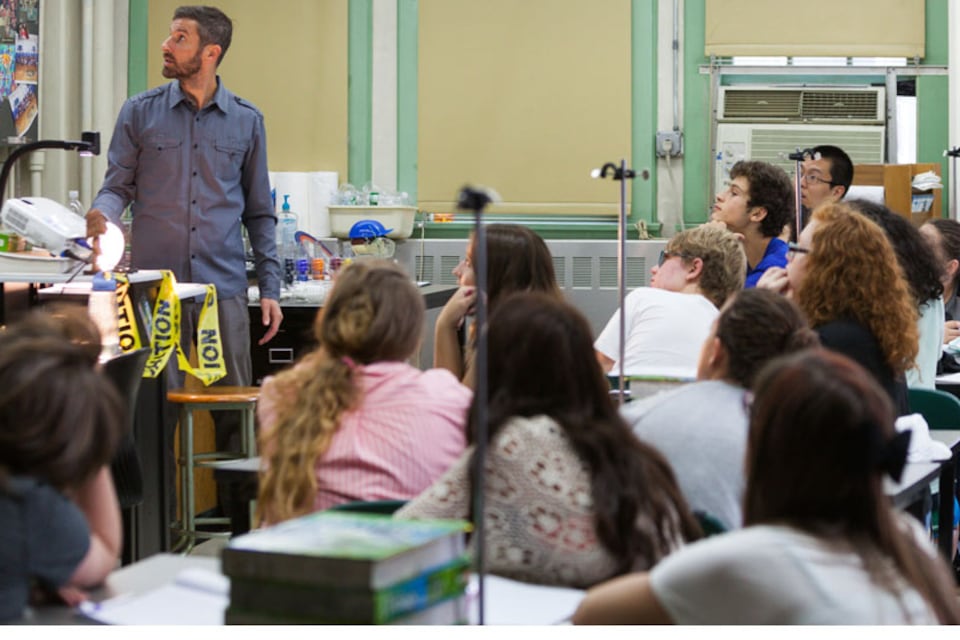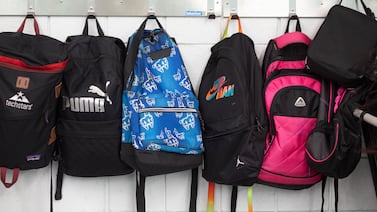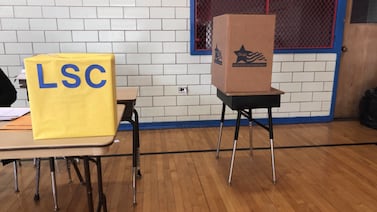It has been clear since last spring that the coronavirus will force significant changes to the competitive admissions process many New York City schools use. But Mayor Bill de Blasio has stalled on deciding whether — and how — schools will be allowed to sort through applications this year.
As the school year moves forward without an answer, integration advocates hope that principals will forge their own paths to reform the application and admissions system, which is complicated, time-consuming, and helps drive segregation.
In the face of a city administration that has proven reluctant to upend long-standing admissions policies, school-by-school reform could be a way forward in the short-term.
One principal who is considering changes is Stacy Goldstein of School of the Future in Manhattan, where enrollment is disproportionately white.
As demonstrators took to the streets this summer to protest racism and police brutality, Black students and alumni at School of the Future began to speak out. They raised concerns about disparities they saw in how students are punished and who is enrolled in advanced courses. Some opened up about hurtful comments from fellow classmates.
“It’s been a reflective point for our whole school community,” Goldstein said. “It was hard, but very good, and it’s been very inspiring.”
Those difficult conversations helped convince Goldstein that a more integrated school could help address her own students’ demands for racial justice. And to become more integrated, she believes the school’s selective admissions policies need to change.
Principals have some leeway to decide which factors to consider in admissions, and what weight is given to different criteria, such as test scores or grades. Goldstein said she wants to work with the school community, including students, parents and graduates, to determine the school’s next steps. But she said she is open to eliminating screening altogether, and also ending a geographic preference that gives certain students priority in admissions.
“I want to do whatever it takes to desegregate our school and get to a place that we’re more evenly representing the city,” she said.
Whatever happens with this year’s admissions at selective schools promises to be contentious.
Some parents have lobbied fiercely to keep in place the current system that allows schools to select students based on their academic records. They argue that children who have earned top grades deserve seats in certain schools and that it’s too difficult for schools to meet the needs of students with widely varying academic records. Many families — affluent and low-income — pay for extra tutoring, test prep, and even admissions consultants to help land their children coveted seats.
Meanwhile, a youth-led movement against selective admissions has been growing. Black and Latino students are underrepresented at screened schools, and student advocates have recently turned their attention towards pressing principals for reform. They say the health crisis has only made the need for change more urgent by laying bare stark inequities. Tens of thousands of students are still waiting for devices to engage in remote learning, and others, particularly those living in homeless shelters, are struggling to get reliable internet access.
Abbie Jobe, a Black student at Eleanor Roosevelt High School in Manhattan’s District 2, has been lobbying her principal for admissions changes at the coveted school. She has been encouraged by the reception so far.
“I can only say we’re hopeful,” she said.
Jobe, a member of Teens Take Charge, said students have also been working to connect principals across different schools in the hopes that they will find more support for reform.
“We’re opening the discussion to other principals and creating that community,” Jobe said. “I think that’s important that they see their own students are speaking out about systems that they have in place in their own schools.”
There have been hints that support for reform could be bubbling up. This summer, hundreds of teachers and principals in Manhattan’s District 2 signed onto a public letter calling for an end to selective admissions in middle schools.
Still, principals have largely stayed out of the public fray over screening, whether out of concern they may face backlash from their own school communities or because they worry that one-off approaches could have unintended consequences. With so many screened schools siphoning off top-performing students, admissions changes at one campus could result in concentrating students with more academic needs at another.
David Bloomfield, an education professor at Brooklyn College and the CUNY Graduate Center, called school-level changes a “drop in the bucket, and while welcome, is not going to make a difference without central leadership.”
The battle over selective admissions in both middle and high schools is particularly pitched in District 2, where School of the Future is located. The district includes some of the city’s most affluent ZIP codes, such as the TriBeCa, Greenwich Village, and the Upper East Side, and enrolls almost twice as many white students as the school system as a whole.
While the city’s high school admissions process was designed to give students citywide a chance to enroll in schools outside their ZIP codes, some schools in District 2 give admissions priority to students living in their boundaries. Enrollment at schools with District 2 priority is especially unrepresentative. At Eleanor Roosevelt on the Upper East Side, about 66% percent of students are white, compared to just 16% across the whole city.
Goldstein said the pool of applicants at her school probably won’t be diverse without also removing the District 2 priority. Since she started as a teacher at the school almost two decades ago, enrollment has steadily shifted from one that hewed closely to the city’s diversity, she said, to one today that is almost 40% white.
Building support to overhaul the school’s admissions will likely take time and cooperation with education department leaders, she said. In the meantime, the city still faces a decision about what to do for this year’s admissions cycle. Last year’s fourth and seventh graders — pivotal grades for this year’s middle and high school applications — did not receive regular letter grades, nor did they take state exams. Education department leaders have already eliminated attendance as an admissions criteria, due to the pandemic.
That all means the process of applying to middle and high school will likely have to look much different this year. While city leaders have suggested any changes will be temporary, Goldstein hopes it will pave the way for lasting reform to encourage more diverse schools.
“It’s an awesome opportunity to warm everybody to what it could look like,” Goldstein said. “I hope it’s a spark for a more transformative enrollment process in our district and our city.”








